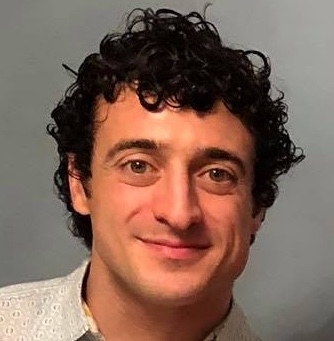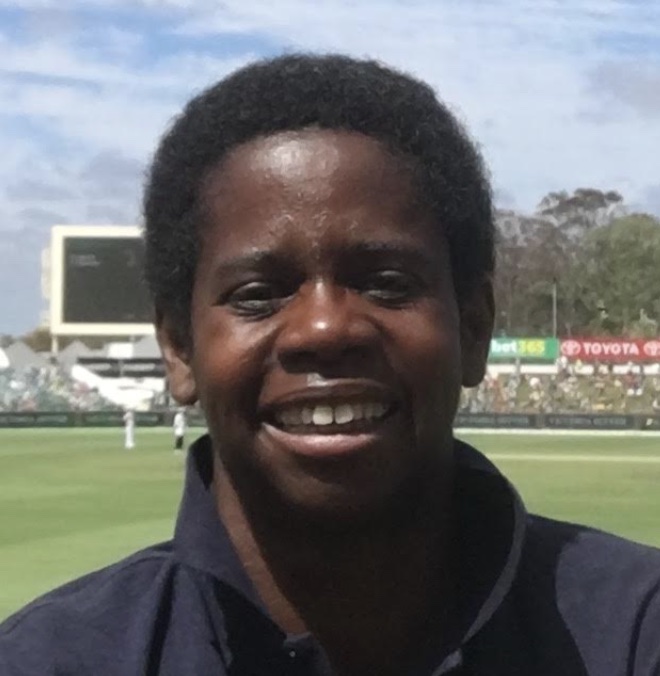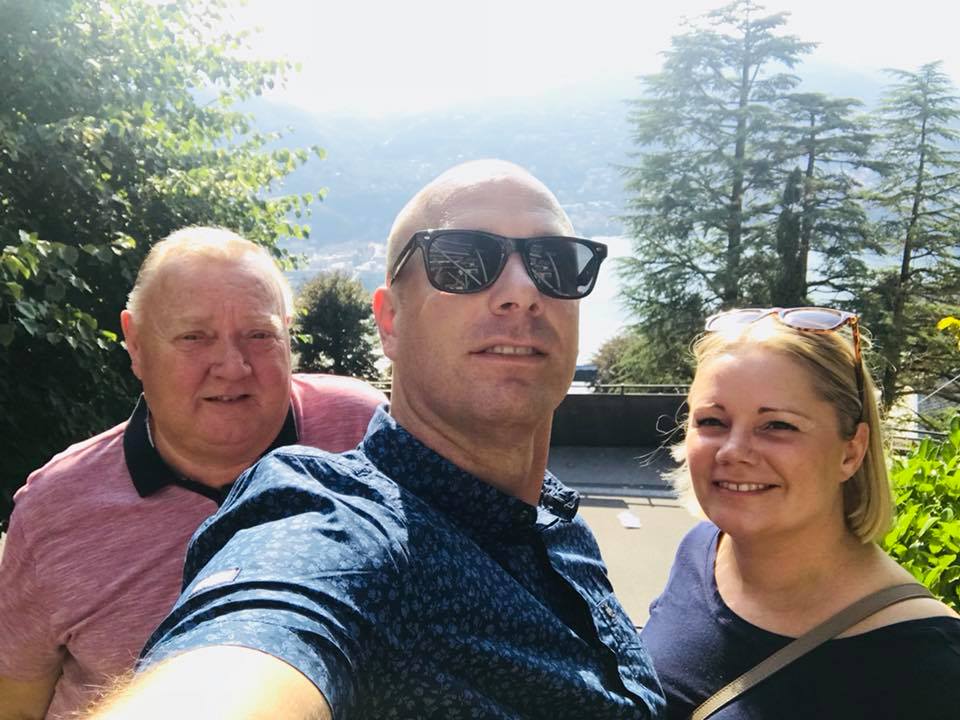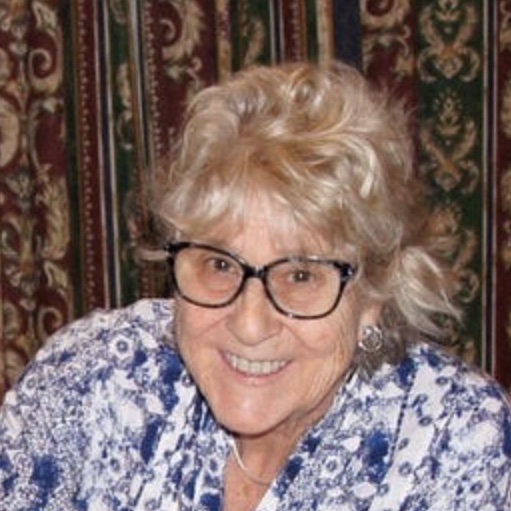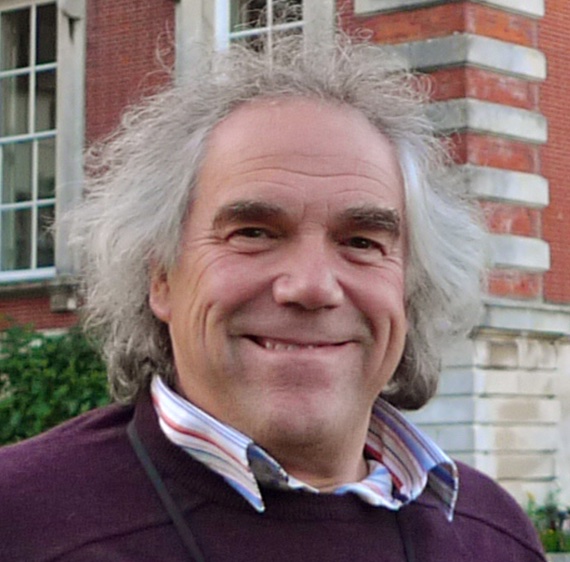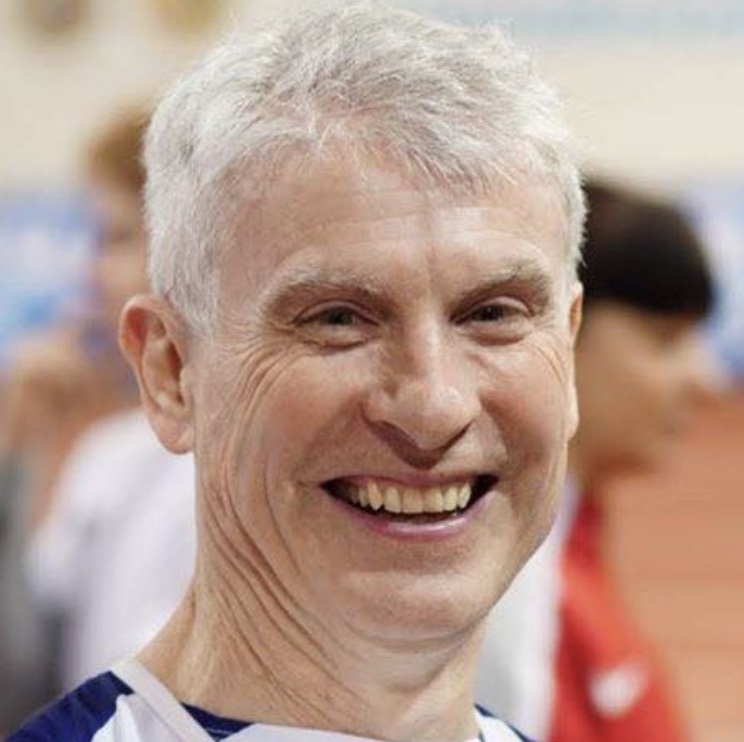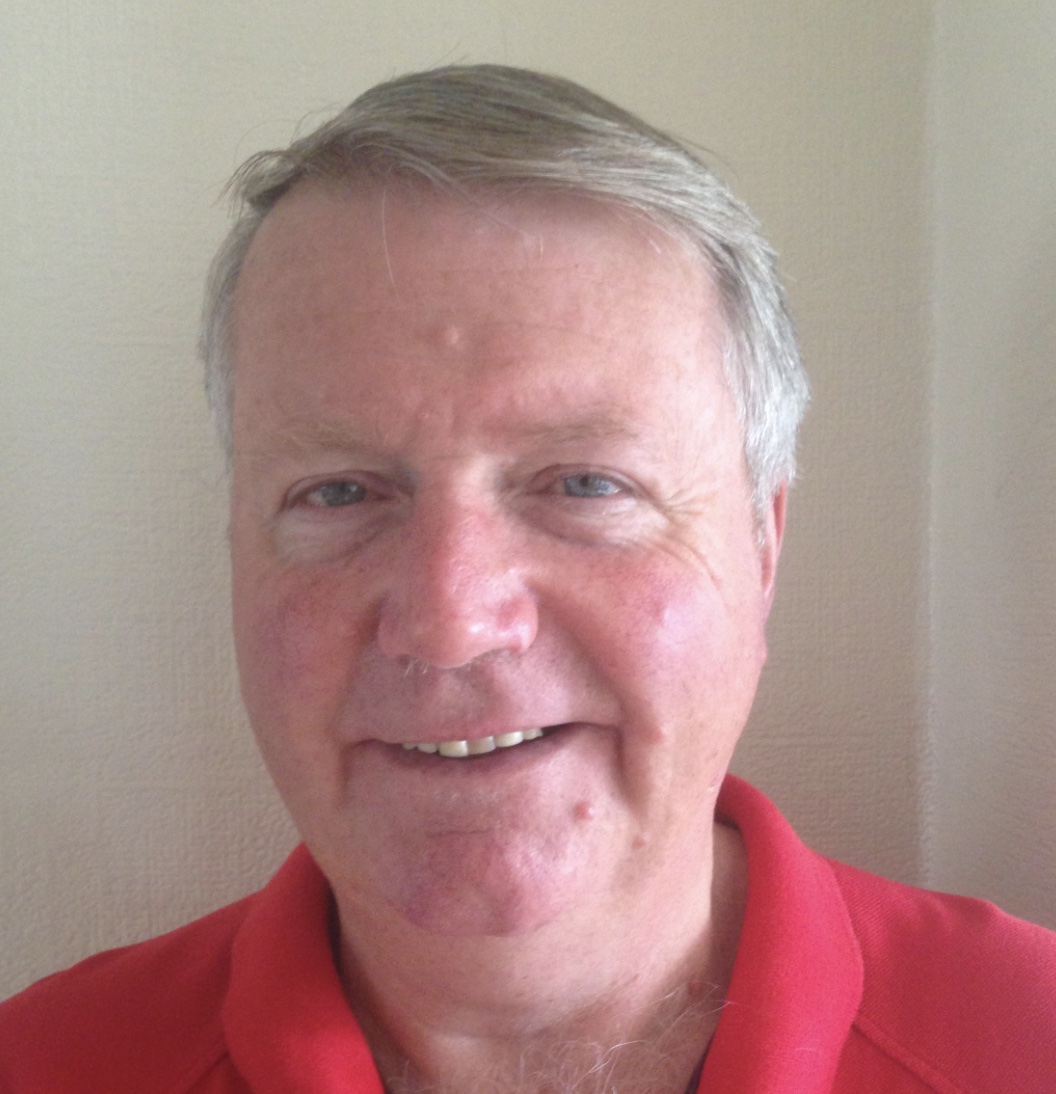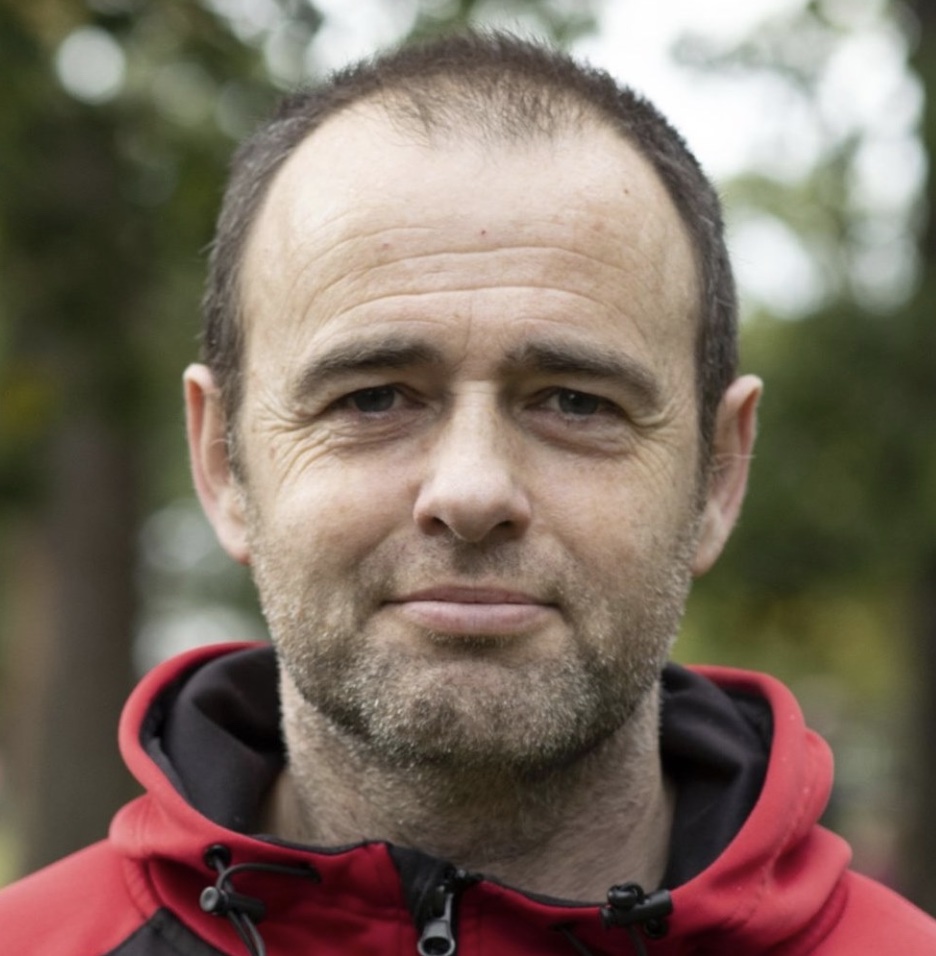Written by DB
THE POLYTECHNIC MARATHON 1909-1996
A SHORT HISTORY OF A LONG RUNNING RACE
What follows is the text of a promotional leaflet produced to celebrate the Centenary of Polytechnic Harriers in 1983 by the then sponsors of the Polytechnic Marathon,Goldenlay Eggs.It is,in fact,a precis of a larger historical account of the Poly Marathon - From the Legend to the Living - by one of its long-time organisers,Arthur Winter.The latter is out of print though a number of copies are known to exist,whilst a few copies of the Goldenlay pamphlet are still available from the compiler of this article.
Additionally,to add to the flavour,we reproduce,courtesy of Ian Ridpath,one-time organiser of the 'Poly' on behalf of West 4 Harriers,two articles compiled and edited by Ian,which appeared in programmes of the later races in 1993 & 1994.
More about the race can be found on Ian's website - http://www.ianridpath.com/polymarathon/history.htm - ;
This salute to the 'Poly' is completed by a list of the individual winners,male & female.
AN ITALIAN BAKER
Probably the most famous sports photograph of all time shows the wraith-like figure of an Italian baker,struggling in the last stages of exhaustion,his feet encased in leather boots weighing at least a pound,falling into the arms of the Polytechnic Harriers' secretary,Jack Andrew,at the finish of the 1908 Olympic marathon.
His name was Pietri Dorando(or,according to other sources,Dorando Pietri) and his erratic progress over the last 385 yards to the tape in London?s White City Stadium was watched by the largest recorded sports crowd in history at that time.
Despite the fact he was near death for 2 1/2 hours after the race and,according to contemporary medical sources,'his heart had been displaced by half-an-inch',Dorando was disqualified for being helped over the finish line…..a charge emphatically denied by Jack Andrew,who said afterwards that,on the advice of the race doctor,he merely caught the Italian as he fell on the tape.
Since then that race has been known as Dorando's marathon and today probably not one person in a thousand can tell you that the man who actually received the winner?s medal was an American called John Hayes.Dorando,meanwhile,had to settle for immortality and a magnificent gold cup given him,as a kind of consolation prize,by Queen Alexandra.And from that time onwards,the marathon was firmly established on the British sporting scene.
That race marks the start of our story,for it was organised by Jack Andrew and it led directly to the Polytechnic Marathon,which in turn was to become the biggest event of its kind in Britain.
THE RUN OF PHAEDIPPIDES
Interest in marathon races had initially been stimulated by the first of the modern Olympic Games,held in Athens in 1896,at which a Frenchman named Michel Breal - a friend of Baron Pierre de Coubertin,whose idea was to recreate the games - persuaded the Greeks to include in the programme of events a long-distance race to celebrate the run of Phaedippides from the village of Marathon to Athens in 490BC.
THE MARATHON LEGEND
The story behind this legend is that Phaedippides was a soldier in the Greek army which,although outnumbered six to one,defeated the invading Persians on the plain two miles beyond Marathon.
Ordered to convey the news of the victory to the elders in Athens,he ran all the way,uttered the immortal words, 'Rejoice,we conquer!'….and then dropped dead(many modern marathon runners know exactly how he must have felt).
The fact that this story has no basis whatsoever in historical fact has given rise to the classic definition of the marathon as a race over a distance chosen for no good reason between runners who are mostly incapable of winning it to commemorate an event which almost certainly never happened.
The Greeks took to the idea at once and the first modern marathon was run between Marathon & Athens on 10th April 1896,a distance of 25 miles.A Greek win seemed likely,as 12 out of the field of 16 were Greeks,and sure enough the first man home was Spiridon Louis from Amaroussion,near Athens,in 2h.58m.50s.
So,by the time of the 1908 London Marathon,there had already been three Olympic marathons and the race had become well established in many parts of the world. What distinguished the London event,apart from the dramatic finish,was the fact that it was the first in the world to be run over the now standard distance of 26 miles 385 yards.
Various reasons have been put forward for arriving at this curious distance,the most likely of which is that it was unknowingly dictated by the British royal family.King Edward VII had agreed that the race could start from Windsor Castle - the Polytechnic marathon continued to do so - and he and Queen Alexandra wished to see the finish from the royal box at the White City Stadium.
The race was scheduled for 26 miles but this took it only to the entrance of the stadium.So an extra 385 yards had to be added to give the royal family literally a grandstand view of the finishing drama.
TELEGRAPH START
Another interesting facet of that race is that it appears to have been started by means of the new-fangled electric telegraph.According to The Times,the Queen at the White City transmitted a signal by electric telegraph to the Princess of Wales(later Queen Mary) at Windsor Castle,who then instructed Lord Desborough to fire the starting pistol.A photograph taken at Windsor Castle at the time certainly shows what looks suspiciously like an electric telegraph instrument on a table at the starting point.
It was the disappointing showing by British runners in the Olympic marathon that prompted The Sporting Life newspaper to put up a trophy for an annual event - and,inevitably in view of their experience with the Olympic race,Jack Andrew and his fellow Polytechnic Harriers were asked to organise it.
RUN SINCE 1909
Thus was born the famous Polytechnic Marathon,which has been run since 1909 from Windsor Castle to a variety of finishing points.The only years the race has not taken place were 1910(owing to the death of King Edward VII),1915 to 1918 because of the First World War(oddly enough,the marathon was staged over special wartime courses between 1940 & 1945) and 1975,although no official time is recorded for the 1972 event because the lead vehicle broke down and the field was misdirected.
It is incredible in these days when everybody seems to be either organising or running in long distance races that as recently as 1975 a marathon should fail to take place because of lack of support,but that is what happened to the ?Poly?.
Fortunately,Goldenlay Eggs - Britain?s largest egg farmer co-operative - were looking at that time for an event to sponsor that was associated with health,strength and stamina.Recognising the potential of the 'Poly'.Goldenlay stepped in to help Polytechnic Harriers revive the event in 1976 and have remained sponsors ever since.
It is an indication of the way in which this famous race has come back to life that,in 1976,a field of just over 100 runners took part,while this year the organisers are expecting an entry of at least 1200.
Two years after the recommencement of the race,Goldenlay provided further impetus to its popularity by including a women?s event.It is believed that this was the first time a women?s marathon had taken place over the same course and at the same time as a men?s event.
Goldenlay provide each year a crystal decanter for the ladies? winner in addition to the now famous Goldenlay trophy for the men?s race.
OUTSTANDING COMPETITORS
The 68 marathons that have taken place since 1909 have been run over a number of different courses and have featured some of the most famous names in British and world long-distance running.A full list of winners,times and courses appears elsewhere in this history;all we can do in the limited space available is to pick out a few of the outstanding competitors,like:
-Sam Ferris,who ran in RAF colours to win eight times between 1925 and 1933 - a feat unequalled to this day.
-Polytechnic Harriers? own Bert Norris,who was first home in 1935,1936 & 1937 and provided the ?Poly? with their first winner since Harry Barrett in the opening event in 1909.
-Leslie Griffiths(Herne Hill Harriers),who won three of the six wartime events.
-Jack Holden(Tipton Harriers),who had a hat-trick of wins in the late 1940s.
-The immortal Jim Peters of Essex Beagles who,in the words of the Polytechnic Harriers' official historian,,Arthur Winter,'was to amaze the world with a series of wins which by all accepted standards of the time were inconceivable - 1952 2h.20m.42s;1953 2h.18m.40s;and 1954 2h.17m.40s.'.
(What is even more astonishing is that these 'inconceivable' times were achieved in a pair of Woolworth?s plimsoles from which Jim had stripped superfluous pieces of rubber for extra lightness!).The last two decades have seen tremendous improvements in equipment,diet and training methods,leading to the emergence of a new breed of runner capable of sustaining a pace unthought of by earlier generations and equally at home on the track,road & cross-country.
MEN WHO WON THE ?POLY?
Among such men who won the 'Poly' in the 1960s,when Callard & Bowser sponsored the race,were:
- Ron Hill(Bolton United Harriers),who went on to reach the pinnacle of marathon success by winning the European,Commonwealth and Boston titles and then returned to the 'Poly' at the age of 39 in 1977 to finish second in a time(2h.16m.37s) which,in most other years,would have been good enough to win.He was unfortunate that day to come up against Ian Thompson.
- 'Buddy' Edelen,of America & Hadleigh Olympiads,who came to this country in 1960 after the disappointment of failing to make the U.S Olympic team and set the fastest recorded time on the world in 1963 with 2h.14m.26s. on the old Windsor-Chiswick course.
- Basil Heatley (Coventry Godiva),who warmed up for his Olympic silver medal in 1964 by winning the ?Poly? in another world?s best of 2h.13m.55s.
- Morio Shigematsu(Japan),the winner in 1965,who broke Heatley?s record with a time of 2h.12m.00s.
Since 1973 the race has been run over the present course from Windsor Castle,through Windsor Great Park and then via a circular route finishing at the Windsor,Slough,and Eton AC stadium in Vansittart Road.
This course,too,has seen some star athletes,including European & Commonwealth champion,Ian Thompson,who in 1977 set the present record of 2h.14m.32s,and Cardiff?s Bernie Plain,whose home has been adorned by the Goldenlay Trophy twice since Goldenlay assumed sponsorship.
Although the women's race is such a newcomer compared with the men's event,prominent personalities have already emerged,including Gillian Adams(Aldershot,Farnham & District),with two victories in three years,and last year?s winner in record time(2h.36m.12s),Kathie Binns of Sale Harriers. It surely cannot be long before the women?s race is completed within the magic 2 1/2 hour mark.
ROYAL STARTERS
The 'Poly' marathon has been illuminated by many famous names among its starters,too - notably royal names,including two Kings(George V & George VI),two Queens(the present Queen Mother as Queen in 1948 & the present Queen in 1962),Prince Philip,Princess Margaret & Princess Alexandra.
NON -ROYAL STARTERS
Non-royal starters have included Lord Mountbatten;Jamaican High Commissioner,Olympic gold medalist & Polytechnic Harrier Sir Arthur Wint,Sir Roger Bannister(who was coached to the first sub-four-minute mile by Franz Stampfl,who was at one time club coach to Polytechnic Harriers),and another Harrier and former marathon runner who rose to the summit of athletics,AAA President Squire Yarrow,who finished second in both the 'Poly' marathon and the European marathon in 1939 and was then runner-up again in the 'Poly' in 1940;while Jim Peters has returned to the scene of so many former triumphs as race referee.
The year 1983 sees the Polytechnic Harriers celebrating the 100th anniversary of their formation(as the cross-country club of what was originally the Young Men's Christian Institute founded in London by Quintin Hogg) and preparing for their 69th marathon,in conjunction with the London Road Runners Club,with as much enthusiasm as for the first.
The great tide of interest in marathon running which has engulfed the country in recent years owes much to the determination of the Polytechnic Harriers and Goldenlay to get this great race going again.Now nobody can be in any doubt that the future of the 'Poly' marathon is assured and that it will continue not only as the oldest event of its kind in the country but as the ?marathon runners? marathon? in which every serious road runner will want to compete at least once in his or her career.
PETERS AND THE POLYTECHNIC - a tribute by Ian Ridpath to a great marathoner
Forty years ago a new Queen was crowned,Everest was climbed for the first time - and,on the roads from Windsor to Chiswick,another peak was conquered when an Englishman ran the first sub 2 hours 20 minutes marathon,the equivalent of the 4-minute mile.That man was Jim Peters,the greatest marathon runner of his day,and the race was,of course,the Polytechnic Marathon.
Under the guidance of his coach Johnny Johnston,Peters took the marathon into a new era. He set a succession of four world records in the early 50s - not bad for a man who had decided to retire from athletics after coming ninth in the 10,000 metres at the 1948 Wembley Olympics.
But he had reckoned without the persuasiveness of Johnny Johnston,who encouraged him to try for the marathon.Together,they developed the now-familiar pattern of training every day with a long run at the weekends.By 1951,Peters was ready for his first marathon - the Polytechnic.He won it in a new course record of 2 hours 29 minutes 28 seconds.The Sunday Express described him as ?a pale little man who went on and on as remorselessly as a Crusader tank?.
The 'tank',blessed with remarkable powers of recovery,rolled on to win the AAA marathon at Birmingham only six weeks later in another course record.Spurred on by these successes he stepped up his training and,the following year,won the Poly again in the unprecedented time of 2.20.42 - not merely a course record,but a world record,the first of four that he was to set.This clinched selection for the 1952 Olympic Games in Helsinki,where he dropped out with cramp after 20 miles.
By now,his intense training had markedly improved his times for shorter distances and he was selected to run cross country for England. But the marathon remained his prime target and in 1953,his greatest year,he was to run four marathons and win all of them,setting two world records in the process.
First came the Poly on June 13 when he ran a new world record of 2.18.40.It was also the first legitimate sub 2.20.run - but no one realised it at the time because Keizo Yamada of Japan had already run 2.19.0 in Boston,another point-to-point marathon with a following wind.Not until 1956 was Peter?s achievement belatedly recognised when Boston was remeasured and was found to have been short since 1951 because of road construction.
Six weeks later Peters won the AAA marathon at Cardiff in 2.22.,and,seven weeks after that,the Enschede marathon,Holland,in 2.19.0,the first sub 2.20 on an out-and-back course.A mere three weeks later,at Turku,Finland,he improved his own world record by five seconds.Even today,four such quality marathons in as many months would be unthinkable,particularly wearing the Woolworths plimsolls that served as footwear in the day before specialised road-racing shoes.
In the Poly race of 1954,Peters was to bring his world record down again to 2.17.39.admitting afterwards that he had 'a little bit in hand throughout the race'. In fact,he had believed that 2.15. was possible.If he were running now,he say,his target would be 2.05.
Five weeks later he was in Vancouver as captain of the English team in the Empire Games,coming third in the 6 miles on the opening day.On the final day he was to run in the marathon,an event that started under a hot noon sun - and,in those days,the first water station was not until ten miles.
As he came into the stadium,3 1/2 miles ahead of the second placed man,he began to wobble.What happened next was reminiscent of the fate that befell Dorando Pietri in the 1908 London Olympics.He collapsed onto the track.
Knowing he had less than a lap to go,he picked himself up,but collapsed again.In all,he must have fallen a dozen times,covering only a few yards in a grotesque and futile attempt to reach the finish. After ten minutes of struggle,he finally passed out and was officially disqualified as the team masseur lifted him from the track.
Following that race he announced his retirement from athletics.This time for good.
MY WORLD RECORD MARATHON - A reminiscence by Basil Heatley
On that Saturday morning in June 1964,my Sunday morning training partner Harrold Lloyd drove me to Windsor in his famous Renault Gordini.I travelled a lot in that Gordini and I knew I could relax,for when the normally quiet and meek Harrold was behind the wheel a new man took over and we went though traffic as if it were not there.
During 1963 I had reluctantly come to the conclusion that I would not gain major representational honours at 10,000 metres and had had two reasonable marathon outings.The year had closed with Ron Hill,Brian Kilby and myself forming the natural trio for Tokyo Olympic selection.However,Juan Taylor was of good international standard and was ready to take advantage should any of us falter.
I was very nervous.Not only did Olympic selection hang on this race but I was less than confident of my ability to race hard over the full 26 miles.Many a good runner over 20 miles has found that last 6 miles a major hurdle.Still,I had prepared well.I had run but not raced the Pembroke 20 two weeks earlier and,though well beaten by both Hill & Kilby,I knew that I would have been close if I had not opted out of the burn-up.
Harrold & I arrived in Windsor with a couple of hours to spare and found a cafe for lunch.I remember well that I had a cold meat salad and too many cups of tea with plenty of sugar.We then went for a walk in Windsor before making our way to the Castle and finding the changing area in the stables.
By today?s standard there were only a handful of runners,but at the sharp end the class was there. Only my Coventry Godiva club mates Kilby and Taylor were missing as they were due to contest the AAA marathon championships at Port Talbot two weeks later.Ron Hill would be the man to beat.His world best time in the Pembroke race confirmed to me that he would be able to convert his considerable talent at shorter distances to success as a marathon runner. Also in the field were the likes of Mel Batty & Gerry North,with international representation from Vaclav Chudomel of Czechoslovakia.
Although the day was not hot,I abandoned my usual claret and gold(they call it red and yellow now) Coventry Godiva Harriers vest in favour of an English cross-country white singlet and my feet were happy to be in a pair of lightweight racing shoes rather than the conventional worn-out track spikes which I used for most of my training.
Perhaps I should explain.In the day before shoe sponsorships and screw-in spikes I would use a new pair of spiked shoes for short track races and grassland training until they were worn down sufficiently for 3-mile races.Later they would go on to be used for 6-mile track and cross country racing,being occasionally sharpened with a file. Finally,I had a local cobbler strip off the sole plate and stick on a crepe with an additional thickness for the heel.He also punched out a number of ventilation holes on the uppers for me.These then served for road training.
As we lined up for the start with the long park drive stretching before us I knew what my target was - Ron Hill and I first and second,whichever way round.I also guessed that the front of the field would overstretch themselves during the first half of the race.Discretion was therefore the better part of valour and I resolved to run my own race.
After the start the leaders did indeed move away from me and reached 10 miles in 50.25 while I was in seventh place,40 seconds behind.I remember one of the Keily brothers shouting to me at this point that I should get a move on because ?this quality of runner does not come back"(the Keilys were a family of runners from Derby,of whom Arthur Keily won the Poly Marathon in 1960).
Well,maybe I did increase my pace a little or maybe they did come back.Anyway,during the next 10 miles I gradually moved through the field,interested only in running steadily and efficiently,encouraged by the fact that I was overtaking people.
There were,I understand,a number of mile indicators with timekeepers,but I missed them all as I concentrated on the backs of the runners ahead. Around 20 miles I caught Ron.After missing out so many times,selection for a major games now looked a real possibility.My confidence increased and I started to test Ron out.
A significant point came when I saw the 21-mile marker - ?only 5 more miles,just the same as my Sunday evening run around the lanes,time to lose Ron?,was my reaction.But Ron did not want to be lost and he responded to my injection of pace.
During the later stages,Harrold ?Fangio? Lloyd had gone on ahead in his little Renault and was encouraging everyone to shout for me.It certainly helped to find unexpected support from the roadside.
I was now feeling the effort but Ron appeared to be floating along effortlessly and I started to get a horrible vision of a sprint finish on the track at Chiswick.Suddenly Harrold was at the side of the road shouting that the stadium gates were just ahead.Instinctively I knew it was the time to strike.
A change of action and I was up and racing instead of striding out.I was on my own,the gates appeared and then I was on the track.But it was not over yet, there was still a full lap of the track to do.That was no problem now I knew I was going to win and,whatever the time,selection for Tokyo was almost certain.
I ran through the finish and jogged on.I was reasonably fresh and wanted to savour the moment. Someone ran up to say that I had set a new world best time,but at first I didn?t believe them.What mattered was that I had stayed the course and won.
At the presentation ceremony the time was announced as 2 hours 13 minutes 55 seconds.It was indeed a new world best.beating Buddy Edelen?s mark set in the previous year?s Poly.Harrold & I accepted several bottles of beer to drink later.For the time being it was tea and more tea with plenty of sugar and a drive back home.I felt good.
The following morning I went out for a gentle run over the fields and realised that I was less tired than after some of my national cross country runs.My Poly had been one of those races you dream about.Now I had to look forward to the following Saturday and the defence of my Midland 3-mile track title.
(Basil Heatley was selected to run for Great Britain in the Tokyo Olympics of October 1964.He took the silver medal in a time of 2:16:19,behind the new world record of 2:12:11 set by Abebe Bikila of Ethiopia).
INDIVIDUAL WINNERS 1909 - 1996
Men
(via Uxbridge and Hanwell to Stamford Bridge for the Sporting Life Trophy)
1909 Henry Barrett(Polytechnic H) 2.42.31
1910 No race owing to the death of HM The King
1911 Harry Green(Herne Hill H) 2.46.29 & 4/5ths
1912 Jim Corkery(Canada) 2.36.55 & 2/5ths
1913 Alexis Ahlgren(Sweden) 2.36.06 & 3/5ths
1914 Ahmed Djebellia(France) 2.46.30 & 4/5ths
1915-1918 No races during First World War
1919 Edward Woolston(Machine Gun Corps) 2.52.30 & 1/5th
1920 Bobby Mills(Leicester H) 2.37.40 & 2/5ths
1921 Bobby Mills(Leicester H) 2.51.00 & 2/5ths
1922 Bobby Mills(Leicester H) 2.47.30 & 2/5ths
1923 Axel Jensen(Denmark) 2.40.46 & 4/5ths
1924 Duncan McLeod Wright(Scotland) 2.53.17 & 2/5ths
1925 Sam Ferris(RAF) 2.35.58 & 1/5th
1926 Sam Ferris(RAF) 2.42.24 & 1/5th
1927 Sam Ferris(RAF) 2.40.32 & 1/5th
1928 Sam Ferris(RAF) 2.41.02 & 1/5th
1929 Sam Ferris(RAF) 2.40.47 & 2/5ths
1930 Stanley Smith(Birchfield H) 2.41.55
1931 Sam Ferris(RAF) 2.35.31 & 4/5ths
1932 Sam Ferris(RAF) 2.36.32 & 2/5ths
(via Datchet,Heathrow,Hayes & Western Avenue to White City)
1933 Sam Ferris(RAF) 2.42.24
1934 Duncan McLeod Wright(Scotland) 2.56.30
1935 Bert Norris(Polytechnic H) 2.48.37
1936 Bert Norris(Polytechnic H) 2.35.20
1937 Bert Norris(Polytechnic H) 2.48.40
(As above but diverted at 22 miles to the new Polytechnic Harriers Stadium at Chiswick)
1938 Henri Palme(Sweden) 2.42.00
1939 Henri Palme(Sweden) 2.36.56
(Wartime course No 1 - Windsor Great Park)
1940 Leslie Griffiths(Herne Hill H) 2.53.41
(Wartime course No 2 - Local roads at Chiswick)
1941 Gerry Humphreys(Woodford Green AC) 3.12.36
1942 Leslie Griffiths(Reading AC) 2.53.56
1943 Leslie Griffiths(Reading AC) 2.53.14
1944 Tom Richards(Mitcham AC) 2.48.45
1945 Tom Richards(Mitcham AC) 2.56.39
(Windsor,Farnham Royal,Iver,Chiswick)
1946 Harry Oliver(Reading AC) 2.38.12
1947 Cecil Ballard(Surrey AC) 2.36.52
1948 Jack Holden(Tipton H) 2.36.44
1949 Jack Holden(Tipton H) 2.42.52
1950 Jack Holden(Tipton H) 2.33.07
1951 Jim Peters(Essex Beagles) 2.29.24
1952 Jim Peters(Essex Beagles) 2.20.42
(via Stoke Poges,Iver and Heston to Chiswick)
1953 Jim Peters(Essex Beagles) 2.18.40
1954 Jim Peters(Essex Beagles) 2.17.39
1955 Bill McMinnis(RAF) 2.36.23
1956 Ron Clark(Herne Hill H) 2.20.16
1957 Eddie Kirkup(Rotherham H) 2.37.04.4
1958 Colin Kemball(Wolverhampton H) 2.22.27
1959 Dennis O?Gorman(St Albans AC) 2.25.11
1960 Arthur Keily(Derby & County AC) 2.19.06
1961 Peter Wilkinson(Derby & County AC) 2.20.25
(for the Callard & Bowser Trophy)
1962 Ron Hill(Bolton United AC) 2.20.59
1963 Buddy Edelen(Hadleigh Olympiads AC & USA) 2.14.28
1964 Basil Heatley(Coventry Godiva H) 2.13.55
1965 Morio Shigematsu(Japan) 2.12.00
1966 Graham Taylor(Cambridge H) 2.19.04
1967 Fergus Murray(Oxford University AC) 2.19.06
1968 Kenji Kimihara(Japan) 2.15.15
1969 Phil Hampton(Royal Navy AC South) 2.25.22
1970 Don Faircloth(Croydon H) 2.18.15
1971 Phil Hampton(Royal Navy AC South) 2.18.31
1972 Don Faircloth(Croydon H) 2.31.52
(approx. 3 miles overdistance - leaders went off course after
lead car broke down)
(via a loop course in Windsor to Windsor,Slough & Eton AC stadium
at Vansittart Road)
1973 Robert Sercombe(Newport H) 2.19.48
1974 Akio Usami(Japan) 2.15.16
1975 No race
(for the Goldenlay Trophy)
1976 Bernie Plain(Cardiff AAC) 2.15.43
1977 Ian Thompson(Luton AC) 2.14.32
1978 David Francis(Westbury H) 2.19.05
1979 Mike Gratton(Invicta AC) 2.19.53
1980 Tony Byrne(Salford H) 2.22.23
1981 Bernie Plain(Cardiff AAC) 2.24.07
1982 Graham Ellis(Holmfirth H) 2.23.28
1983 Alan McGee(Southampton & Eastleigh AC) 2.22.55
1984 David Catlow(Cheltenham H) 2.26.02
1985 Terry Donaghy(London Road Runners) 2.33.02
1986 Hugh Jones(Ranelagh H) 2.26.11
(as above,but with finish at Windsor Safari Park)
1987 Mick McGeoch(Les Croupiers) 2.28.49
1988-1991 No races
(via Datchet,Staines,Sunbury,Hampton Court,Kingston and Richmond to Chiswick)
1992 Hugh Jones(Ranelagh H) 2.22.58
1993 Jonathan Hooper(Bridgend AC) 2.25.55
1994 Chris Buckley(Westbury H) 2.21.57
1995 Valery Zolotkov(Russia) 2.20.46
1996 Marc Verrdytt(Belgium) 2.23.43
There were no further races after 1996
Women
1978 Gillian Adams(Aldershot,Farnham & District AC) 2.54.11
1979 Jane Davies(Epsom & Ewell H) 3.21.23
1980 Gillian Adams(Aldershot,Farnham & District AC) 2.45.11
1981 Caroline Rodgers(Highgate H) 2.51.03
1982 Kath Binns(Sale H) 2.36.12
1983 Val Howe(Bracknell AC) 3.05.39
1984 Sarah Foster(Woking AC) 2.50.00
1985 Pamela Davies(Belgrave H) 3.22.28
1986 Frances Guy(Belgrave H) 2.51.15
1987 Christine Gray(Portsmouth J) 3.18.50
1988 -1991 No races
1992 Karen Bowler(Hailsham H) 3.08.28
1993 Elaine Flather(Southampton RRC) 2.51.21
1994 Elaine Flather(Southampton RRC) 2.51.51
1995 Eryl Davies(Bridgend AC) 2.49.23
1996 Helen Grimshaw(Hounslow AC) 2.57.56
There were no further races after 1996
So ended the famous Poly Marathon! Despite the substantial and marvellous voluntary efforts from Harriers members down the years,and similarly enthusiastic and 'professional' promotions in the last few years of the race's existence,notably from West 4 Harriers,London RRC,Capital RRC and Sporting Chance,the Poly Marathon became commercially unviable and 'went the way of all flesh'. When confronted by the big city marathons,not least the London,there was no way out. Sadly,too,despite a protracted and expensive fight to establish 'ownership' of the magnificent and valuable Sporting Life Trophy,this,too,is no longer directly in the hands of its rightful owners,although it is normally on display annually at London Marathon HQ. The memories,the highlights,the world records,of the Poly remain but the race ,like old soldiers,will never die but just fade away. AU REVOIR,FINE FRIEND!

